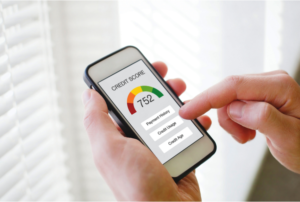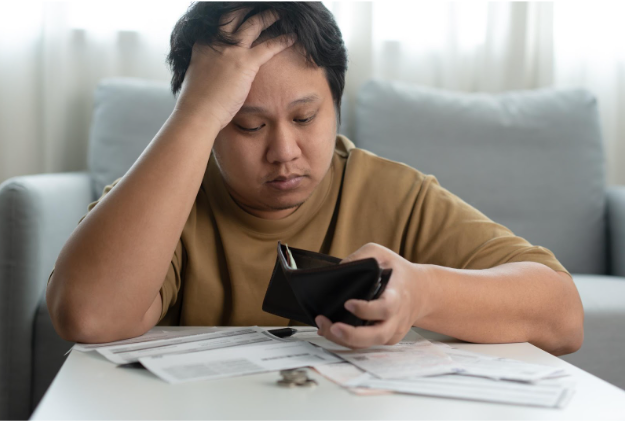
Here are the Steps to Rebuild your Credit Score
If you have damaged your credit score, you might feel like there’s no bouncing back, but you can learn how to fix bad credit. Your credit score changes often as creditors report the credit to the credit bureaus monthly. This gives you plenty of opportunities to rebuild your credit score.
Use these steps if your credit score isn’t where you’d like it to be.
Get a Free Copy of your Credit Report
First, to learn how to fix bad credit, pull a free copy of your credit report. You have access to one report from each bureau annually. You can pull both your Equifax and TransUnion reports at the same time or pull them approximately six months apart so you cover the entire year.
When you look over your credit reports, look for late payments, errors, overextended credit cards, or even bankruptcy tradelines. Every detail on your credit report affects your credit score.
Knowing why your credit score is low can help you make the necessary changes. Not only are you looking for mistakes you made (late payments, overextended credit), but also mistakes the creditor or the credit bureaus made. If you notice any mistakes, write the credit bureau a letter stating the mistake and provide any proof you have to have the mistake corrected quickly.
Bring all Late Payments Current
If you have any late payments (these are payments that are 30+ days past due), pay them as quickly as you can. The key is to bring your debts current so you can get a good payment history.
Your payment history makes up 35% of your credit score and is the largest part of it. One late payment can drastically affect your credit score and more than one can make it hard to get approved for any other credit.
Once you get your payments current, continue making your payments on time to improve your credit history and your credit score.
Lower your Credit Utilization Rate

Your credit utilization rate is the comparison of your outstanding debt to your total credit line. For example, let’s say your credit line is $2,000 and you have a balance of $1,000. Your credit utilization rate is 50%.
Ideally, you want a credit utilization rate of 30% or less. This has the best effects on your credit score. Any utilization rate higher than 30% can cause your credit score to drop.
To make it easy on yourself, think of it this way. You should have no more than a $300 balance for every $1,000 credit line.
To lower your credit utilization rate, you must either pay your balances down (recommended) or ask your credit card provider for a higher credit limit. If you have a good history with them, they may approve your request, but it’s best to get out of debt first.
Apply for a Secured Credit Card
If your credit score is pretty low and you can’t get approved for a standard credit card but you need the credit history, consider a secured credit card. A secured credit card has a credit line that’s equal to your deposit. For example, if you put down $300, you have a $300 credit line.
You can use the card like any other credit card, but if you don’t make your payments on time, the credit card company will keep your deposit. But, if you make your payments on time and build a good credit history, you’ll get your deposit back when the credit card company decides you’re ready for an unsecured card.
Ask to be an Authorized User
If you have bad credit and have tried everything else to improve it, ask a close family member if you can be an authorized user on his/her credit card.
An authorized user has the right to use the credit card (but doesn’t have to). If the credit card company reports authorized users to the credit bureaus, you can get credit for the cardholders good credit. Make sure you choose someone that pays their credit card bills on time and who uses them responsibility (doesn’t overextend their credit).
Don’t Close Old Credit Accounts
Your length of credit history also plays a role in your credit score. The older your accounts are, the better it is for your credit score.
To keep your credit score up, don’t close old accounts. For example, if you had outstanding debt on a credit card and you paid it off, don’t close it. You can lock it up so you don’t use it or put it somewhere safe, but keep the account open.
Each time you open new credit it lowers your average credit age and can lower your credit score. By keeping old accounts open, you help your credit score increase.
Don’t Apply for New Credit
Even though you probably get a lot of ‘pre-approved’ offers in the mail for personal loans and credit cards, don’t apply.
Only apply for new credit when you absolutely need it and when it makes sense to do so. For example, if you’re buying a home, you need a mortgage so that makes sense. But if you get offers for credit cards and apply for each one of them, the inquiries hurt your credit score and too much revolving debt at your disposal can be bad.
Have Patience

What’s most important as you learn how to fix bad credit is to have patience. Your credit score didn’t fall overnight and it’s not going to increase overnight either.
To improve your credit score, you need slow, consistent steps. Keep making your payments on time and using your credit cards responsibly. If you need additional help, apply for a secured credit card or become an authorized user.
If it’s all too overwhelming, consider contacting a debt expert. You can get help improving your credit score, taking care of old debts, and managing your credit responsibly. Together you’ll create a plan that helps you improve your credit and your personal financial situation so you are out of debt and can enjoy some financial freedom.





